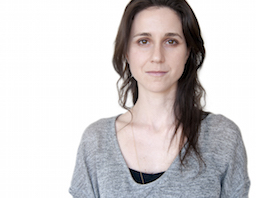Radical/Networks
October 24-25, 2015
Integrated Digital Media
MAGNET NYU Poly, Brooklyn, NY
Shuli Hallak

Shuli Hallak is an award winning professional photographer with 10 years of experience documenting core infrastructure. In 2013, she founded Invisible Networks with the mission of making the Internet visible. Currently, she is developing web-based, data driven interactive visuals that help translate technical information into an easily understandable experience.
She recently gave a Tech Talk at Google's Mountain View campus about the importance of seeing the Internet.
Her work has been published in Fortune, Fast Company, The Wall Street Journal, The New York Times Magazine, Bloomberg News, Slate, Orion among others.
She has been a guest on the following podcasts:
QNY Tech:
Net Neutrality Spectacular
You've Been Shamed
Curious World:
Visualizing The Internet
Shuli has a B.A. in Philosophy from Washington University in St. Louis, and an M.F.A in Photography from The School of Visual Arts in NYC.
Presenting
Seeing the Internet
The power of the Internet is derived from its intangible, invisible properties. The ability of information to scale and traverse in an instant is transformative, and the application of that power can be used in multiple ways, some good and some not so good. Because we can not see these systems that we rely on — the hardware (routers, switches, data centers, fiber cables), and invisible properties (spectrum, wireless networks, protocol) — we are as a whole, left in the dark and unaware of how our own data exists in these networks. We often take a breath and hope the entities that we are “agreeing” with (“trusting”) will do good. And we are presented with less than desirable options: convenience or privacy, but we can’t have both. Really though, if we can’t see it, we can’t fully trust it.
But what if we could see how the Internet works? What if we could see both the physical and intangible?I’ll show and discuss the physical infrastructure of the Internet, which I’ve been photographing for several years — parts that are normally completely off limits to the public — and explain with visuals how some of the intangible properties work.
If we can see the Internet as a whole, we can build visual concepts and language around it, and we can understand where to place our trust. We can understand where and how common infrastructure breaches happen, such as Prism. We can begin to understand how our data is used as a commodity. And we can understand that sometimes, trusting ourselves is worth more than convenience.





